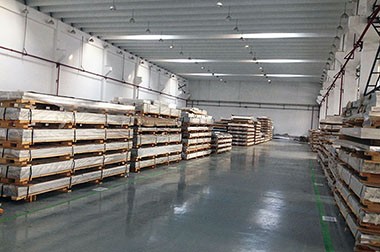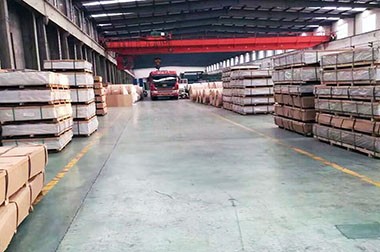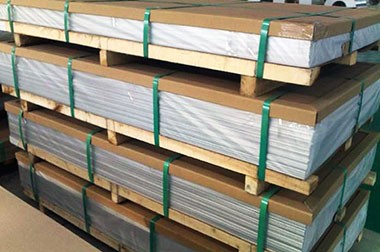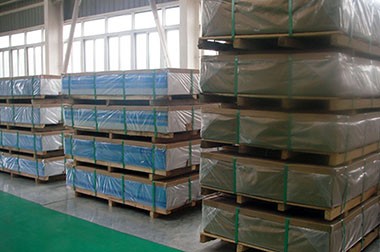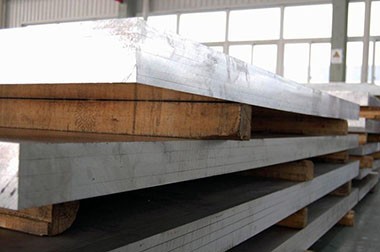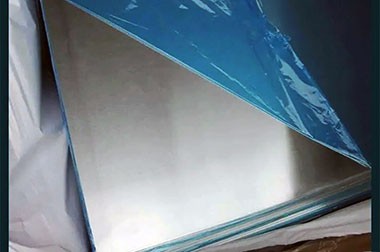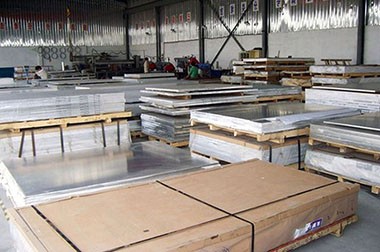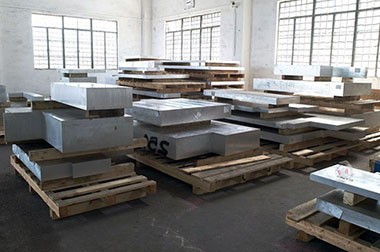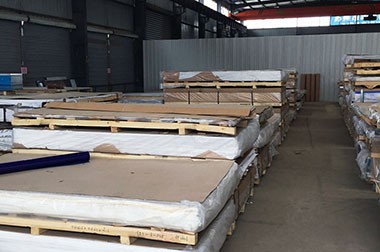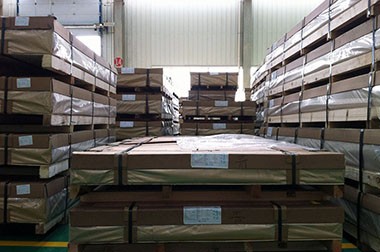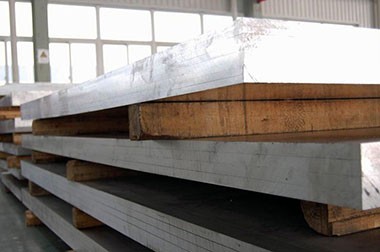7178 O T6 Aircraft Aluminum Sheet Plate
7178 aerospace aluminum plate is a high-strength, high-toughness aerospace alloy with excellent corrosion resistance and outstanding strength-to-weight ratio. It is widely used in the aerospace industry, particularly for components that require extremely high material strength and durability, such as aircraft, spacecraft, and other high-load transportation vehicles.
The main alloying elements of 7178 are copper and magnesium, which provide exceptional strength and durability. It also has good machinability, making it suitable for various metalworking processes such as machining, welding, and heat treatment. After annealing, 7178 aluminum alloy has good workability and can be easily welded using resistance welding.
During heat treatment, 7178 aluminum alloy is typically heated to 875°F and undergoes water quenching. This heat treatment process enables precipitation hardening, significantly improving its mechanical properties. This enhances its ability to form thicker plates and boosts its overall performance, particularly in aerospace applications.
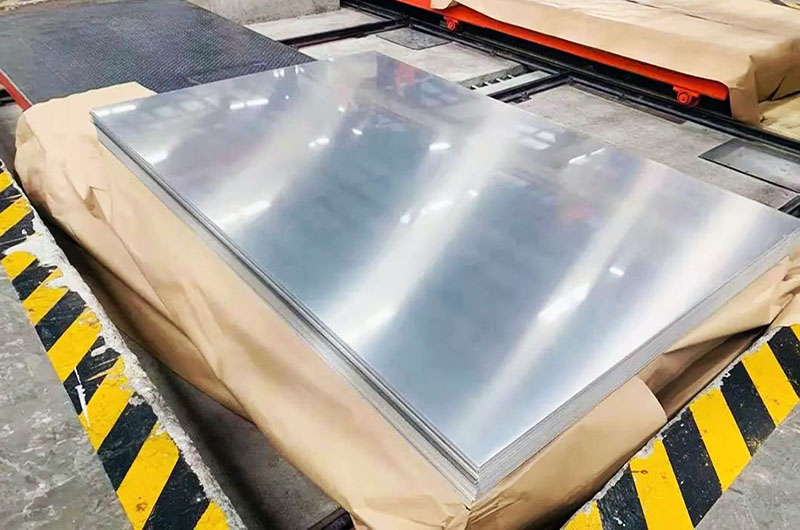
Characteristics of 7178 Aircraft Aluminum Plate
- 1. High Strength: 7178 aluminum alloy has outstanding tensile strength and yield strength, making it suitable for applications that bear high loads.
- 2. Lightweight: As an aluminum alloy, 7178 aircraft aluminum plate is relatively lightweight, helping to reduce the overall weight of structures and improve fuel efficiency.
- 3. Good Machinability: Despite its high strength, 7178 aluminum alloy still possesses good machinability under appropriate conditions, allowing for machining processes such as cutting and stamping.
- 4. Corrosion Resistance: With proper surface treatment, 7178 aluminum alloy can provide good corrosion resistance, extending its service life.
- 5. Heat Treatment Strengthening: 7178 aluminum alloy is typically subjected to heat treatment processes such as T6 or T651 to further enhance its mechanical properties.
- 6. Toughness: This alloy exhibits excellent toughness, giving it resistance to fracture and fatigue.
- 7. Stress Corrosion Cracking Resistance: 7178 aluminum has good resistance to stress corrosion cracking, making it a durable material for use in harsh environments.
Below is a table with additional feature information for aluminum alloy 7178:
| Item | Description |
| Main Design Features | Aluminum alloy 7178 is a high-strength alloy with magnesium and copper as the primary alloying elements. It can be heat-treated and improved through precipitation hardening to enhance its mechanical properties. |
| Applications | 7178 aluminum is typically used in the manufacture of aircraft and other structures. |
| Machinability | 7178 has good machinability in the annealed condition, and oil lubrication is recommended during machining. |
| Formability | 7178 is difficult to machine or form in any T-state. For 7178 T6 plate, a large bending radius is required (4 to 5 times the material thickness). |
| Welding | Resistance welding is recommended; it is not suitable for fusion welding. |
| Heat Treatment | Solution heat treatment temperature is 875°F (W state), followed by water quenching. Precipitation hardening can be applied afterward (see "Aging Treatment"). |
| Cold Working | Cold working is more difficult compared to many other aluminum alloys. For 7178 T6 0.063-inch thick plate, a large bending radius is required (4 times the thickness). |
| Annealing | Anneal at 775°F for 3 hours, cool (in any manner) to 400°F or lower, then heat to 450°F and hold for 4 hours. Air cool. This will eliminate the solution heat-treated condition and produce an O temper. For annealing during cold working, a 650°F soak followed by air cooling is sufficient. |
| Aging Treatment | Precipitation heat treatment (aging) is performed at 250°F for 24 hours to achieve T6 and T651 temper. For T76 and T7651 temper, heat at 250°F for 3 hours, then heat at 350°F for 20 hours, followed by air cooling. |
Specifications and Standards for 7178 Aircraft Aluminum Sheet
| Specifications | Description |
| Available Forms | Sheet, plate, and extrusion |
| Thickness Range | 0.016 inches to 6 inches |
| Width Range | 24 inches to 72 inches |
| Length Range | 48 inches to 144 inches |
Haomei Aluminum offers 7178 aerospace aluminum in sheet, plate, and extrusion profiles, with a wide range of sizes and thicknesses. Our aluminum products meet the highest industry standards and can be customized to your specific requirements.
| Product Spec | Shape |
| AMS 4051, QQ-A-250/15 7178 Aluminum Plate | Plate |
| AMS 4051, QQ-A-250/15 7178 Aluminum Sheet | Sheet |
| AMS-QQ-A-200/13, QQ-A-200/13 7178 Aluminum Bar | Bar |
| AMS-QQ-A-200/13, QQ-A-200/13 7178 Aluminum Extrusion | Extrusion |
| AMS-QQ-A-200/13, QQ-A-200/13 7178 Aluminum Rod | Rod |
| AMS-QQ-A-200/13, QQ-A-200/13 7178 Aluminum Tubing | Tubing |
| AMS-QQ-A-200/13, QQ-A-200/13 7178 Aluminum Wire | Wire |
| AMS-QQ-A-200/14, QQ-A-200/14 7178 Aluminum Bar | Bar |
| AMS-QQ-A-200/14, QQ-A-200/14 7178 Aluminum Extrusion | Extrusion |
| AMS-QQ-A-200/14, QQ-A-200/14 7178 Aluminum Rod | Rod |
| AMS-QQ-A-200/14, QQ-A-200/14 7178 Aluminum Tubing | Tubing |
| AMS-QQ-A-200/14, QQ-A-200/14 7178 Aluminum Wire | Wire |
| AMS-QQ-A-250/14, QQ-A-250/14 7178 Aluminum Plate | Plate |
| AMS-QQ-A-250/14, QQ-A-250/14 7178 Aluminum Sheet | Sheet |
| AMS-QQ-A-250/15, QQ-A-250/15 7178 Aluminum Plate | Plate |
| AMS-QQ-A-250/15, QQ-A-250/15 7178 Aluminum Sheet | Sheet |
| AMS-QQ-A-250/21, QQ-A-250/21 7178 Aluminum Plate | Plate |
| AMS-QQ-A-250/21, QQ-A-250/21 7178 Aluminum Sheet | Sheet |
| AMS-QQ-A-250/22, QQ-A-250/22 7178 Aluminum Plate | Plate |
| AMS-QQ-A-250/22, QQ-A-250/22 7178 Aluminum Sheet | Sheet |
| AMS-QQ-A-250/28, QQ-A-250/28 7178 Aluminum Plate | Plate |
| AMS-QQ-A-250/28, QQ-A-250/28 7178 Aluminum Sheet | Sheet |
The specifications and standards for 7178 aircraft aluminum plate typically conform to international aerospace material standards, such as AMS (Aerospace Material Standards) and ASTM (American Society for Testing and Materials).
7178 aerospace aluminum sheet chemical composition
Below is the chemical composition table for 7178 aerospace aluminum plate:
| Element | Content (%) |
| Cu | 1.6 - 2.4 |
| Mn | ≤ 0.30 |
| Mg | 2.4 - 3.1 |
| Fe | ≤ 0.50 |
| Si | ≤ 0.40 |
| Zn | 6.3 - 7.3 |
| Cr | 0.18 - 0.35 |
| Ti | ≤ 0.20 |
Applications of 7178 Aircraft Aluminum Sheet
7178 aircraft aluminum plate is widely used in the aerospace field, including aircraft structural components, wings, fuselage, and other load-bearing parts. Additionally, it is used in military equipment, racing cars, sports equipment, and other applications that require high strength and lightweight properties.
1. Aircraft Structures
The 7178 aluminum alloy has extremely high tensile and yield strength, allowing it to withstand various loads during flight and ground operations, including aerodynamic loads, gravity, and acceleration. Compared to other metal materials, the lower density of 7178 aluminum alloy helps reduce the overall weight of the aircraft, thereby improving fuel efficiency and range.
7178 aluminum alloy is suitable for various machining methods, enabling the fabrication of complex structural components to meet aircraft design requirements.
2. Wing Skin
Wing skins require good aerodynamic characteristics, and the strength and stiffness of 7178 aluminum alloy allow it to maintain shape and reduce deformation, optimizing aerodynamic performance. During flight, wing skins endure significant aerodynamic loads, and the high strength characteristics of 7178 aluminum alloy ensure the stability and safety of the skin under extreme conditions.
The design of wing skins using 7178 aluminum alloy can significantly reduce the weight of the wings and improve overall flight efficiency. Its corrosion resistance and fatigue resistance allow wing skins made from 7178 aluminum alloy to maintain good performance over prolonged use, reducing maintenance and replacement costs.
3. Wing Spars
Wing spars are the primary load-bearing components of the wings, needing to withstand lift and other loads during flight. The high strength of 7178 aluminum alloy ensures that wing spars do not yield or fracture under high loads. During flight, wing spars must resist bending and twisting moments, and the good stiffness of 7178 aluminum alloy enables it to effectively tackle these mechanical challenges.
The lightweight design of wing spars helps improve the overall performance of the aircraft, and the low density of 7178 aluminum alloy makes it an ideal choice. The strength of 7178 aluminum can be further enhanced through heat treatment processes to meet various design requirements.
4. Landing Gear Components
The landing gear endures significant impact loads during takeoff and landing, and the high strength of 7178 aluminum alloy ensures its reliability under extreme conditions. Although landing gear is typically equipped with shock-absorbing systems, the toughness and strength of 7178 aluminum alloy can effectively absorb some impact forces, extending the lifespan of the components.
Landing gear is often exposed to various environmental conditions, and the corrosion resistance of 7178 aluminum alloy ensures its performance and safety in harsh environments. The machinability of 7178 aluminum alloy allows for quick repairs or replacements of landing gear components when needed, reducing maintenance costs.
5. High-Strength Components
High-strength components such as engine mounts and connectors must withstand substantial loads and pressures, and the high strength of 7178 aluminum alloy ensures safety under high-stress conditions. In aviation applications, the failure of any component can lead to severe consequences, and the high reliability of 7178 aluminum alloy makes it an ideal choice for critical components.
7178 aluminum alloy performs excellently under repeated loads, effectively resisting fatigue failure and ensuring the safety of the aircraft during long-term use. The machinability and heat treatment properties of 7178 aluminum alloy allow it to adapt to the design of various specialized components, meeting different engineering requirements.

